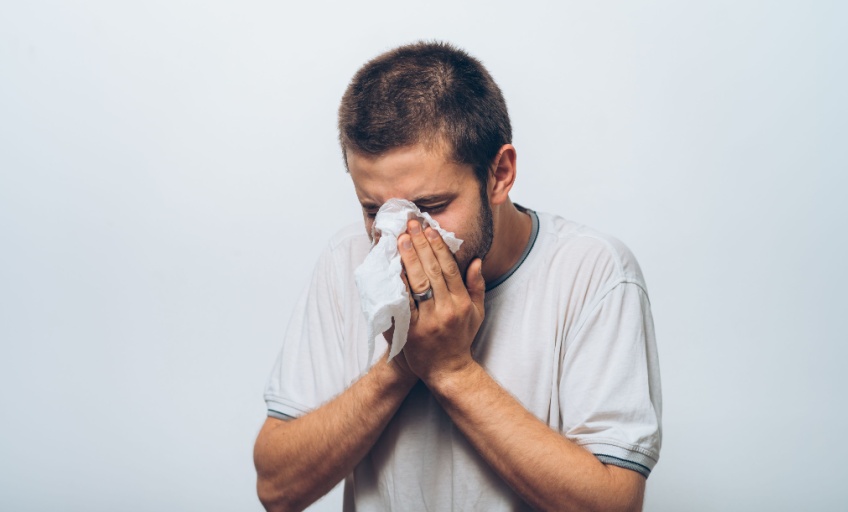Have you ever wondered what the annoying sticky material dripping down your nose when you are sick is? That sticky, gelatinous material lining your lungs, throat, mouth, nose, and sinuses is mucus. Your body makes about 1.5 liters of mucus every day.
What you need to know:
- Understanding the importance of mucus
- Causes that trigger excessive mucus production
- Simple strategies to manage mucus
Understanding the importance of mucus
Mucus is produced by membranes in the nose and sinuses, and its main function is to trap bacteria, viruses, and allergens like dust or pollen in your nose and prevent them from spreading through your body and making you sick. Eventually, the mucus and the substances it has trapped will head to the stomach and pass out of the body. The mucus is also made by the digestive system, the cervix, and the urinary tract. It prevents you from getting sick and protects the tissue that lines your lungs, throat, and nasal and sinus passages, keeping them from drying out.
Understanding the different types of mucus
You generally don’t notice your mucus unless you are sick. But if you have an infection, your mucus may change its colour. If you smoke or are exposed to an irritant in the air, you may produce more of it than usual.
Color, consistency, and what they might indicate
- A light yellow, beige or greenish mucus indicates that you might have a cold, a sinus infection, or bronchitis.
- Mucus may also appear green when it thickens.
- A red or brown colored mucus after you blow your nose indicates that there’s blood in your mucus.
Mucus symptoms that need attention
Watch out for the following mucus symptoms:
Excessive mucus production
If you smoke or are exposed to an irritant in the air, you may produce more mucus than usual. If you start producing a lot of clear mucus, it indicates that you are experiencing allergies and your body is trying to get rid of irritants like pollen or dust.
Changes in mucus color or consistency
When you are sick, your mucus may become stickier. When you have an infection, your body produces more white blood cells, and sends them to your airways to fight it, which can give your mucus a yellow or greenish color.
Persistent cough accompanied by mucus
Phlegm is a type of mucus produced by the lungs and respiratory system, unlike the mucus produced by the nose. It’s a sign of inflammation and irritation. Phlegm expelled through coughing is called sputum.
Causes that trigger excessive mucus production
Excessive mucus production can be caused by:
The common cold and seasonal allergies
When you are sick, thicker or stickier mucus may build up in your lungs and throat, causing congestion and difficulty breathing or swallowing. Excess mucus at the back of your nose may drip down your throat and lead to a cough.
Sinus infections and upper respiratory tract infections
Sinus infections or sinus inflammation may stem from an infection in another part of the respiratory system. It may lead to increased mucus production and blocked sinuses.
Exposure to irritants like dust, smoke, or pollution

If you are exposed to irritants in the air like dust, smoke or pollution, you may produce more mucus than usual – a sign that your mucous membranes are too dry.
When should you seek professional help for mucus issues?
If you think you might have allergies, a cold, sinus pain, fever or a respiratory infection, notice a change in your mucus’ –
- Consistency – It may appear thick or sticky,
- Quantity – It may be generated in excess, or
- Color – Light yellowish, beige, greenish, reddish or brownish
If this concerns you and your symptoms do not get better or worsen with time, talk to your healthcare provider, who can assess your mucus and diagnose.
Simple strategies to manage mucus
Follow the simple strategies mentioned below to manage mucus:
Staying hydrated
Drink enough water – at least eight glasses in a day (enough so that urine is pale) and limit drinking beverages loaded with caffeine, as they can be dehydrating.
Using a humidifier to moisten dry air
Try using a humidifier to keep your throat and nasal passages moist. This will alleviate the excessive mucus and phlegm production.
Elevating your head while sleeping for drainage
When you have nasal congestion, any mucus buildup can drip back into your throat, triggering the cough. Elevating your head or lying on your side may let the mucus drip out instead.
Saltwater nasal irrigation

Use irrigation devices, such as neti pots or squeeze bottles, to move a saltwater solution through your nasal passages to clear out mucus and flush out allergens.
While your body needs mucus to stay healthy, a stuffed nose might feel agitating. The above-mentioned strategies are simple yet effective in managing mucus symptoms. Do visit your healthcare provider if the symptoms don’t seem to go away.
Stay tuned to the Activ Living Community. Keep up to date with the latest health tips and trends through expert videos, podcasts, articles, and much more on nutrition, fitness, mindfulness, and lifestyle conditions like Asthma, Blood Pressure, Cholesterol, and Diabetes. Activ Living ke saath sahi sehat ki shuruaat ABHIkaro.
You may also be interested in the following blogs:
Popular Searches
How to lower blood pressure | Fruits good for liver | Unhealthy foods | Ragi Benefits | Basal Metabolic Rate | Acupressure points for High Blood Pressure | Ayurvedic medicine for blood pressure | How to control cholesterol at home | Homeopathy for Asthma | Biological Age | Home remedies for TB | Natural beta blockers | Negative effects of internet | Types of walking | Blood pressure calculator | Blood sugar calculator | BMI Calculator





 1800-270-7000
1800-270-7000






